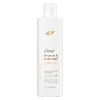What's inside
What's inside
 Key Ingredients
Key Ingredients

 Benefits
Benefits

 Concerns
Concerns

 Ingredients Side-by-side
Ingredients Side-by-side

Zinc Pyrithione 1%
AntiseborrhoeicWater
Skin ConditioningSodium Laureth Sulfate
CleansingCocamidopropyl Betaine
CleansingSodium Chloride
MaskingCocos Nucifera Oil
MaskingButyrospermum Parkii Butter
Skin ConditioningTocopheryl Acetate
AntioxidantHelianthus Annuus Seed Oil
EmollientDimethiconol
EmollientParfum
MaskingCarbomer
Emulsion StabilisingDimethicone
EmollientDMDM Hydantoin
PreservativeGuar Hydroxypropyltrimonium Chloride
Skin ConditioningCitric Acid
BufferingGlycerin
HumectantZinc Sulfate
AntimicrobialTea-Dodecylbenzenesulfonate
CleansingPoloxamer 407
EmulsifyingLaureth-23
CleansingLaureth-4
EmulsifyingPPG-9
Skin ConditioningButylene Glycol
HumectantIodopropynyl Butylcarbamate
PreservativePEG-4
HumectantXanthan Gum
EmulsifyingMethylchloroisothiazolinone
PreservativeMethylisothiazolinone
PreservativeDisodium EDTA
Zinc Pyrithione 1%, Water, Sodium Laureth Sulfate, Cocamidopropyl Betaine, Sodium Chloride, Cocos Nucifera Oil, Butyrospermum Parkii Butter, Tocopheryl Acetate, Helianthus Annuus Seed Oil, Dimethiconol, Parfum, Carbomer, Dimethicone, DMDM Hydantoin, Guar Hydroxypropyltrimonium Chloride, Citric Acid, Glycerin, Zinc Sulfate, Tea-Dodecylbenzenesulfonate, Poloxamer 407, Laureth-23, Laureth-4, PPG-9, Butylene Glycol, Iodopropynyl Butylcarbamate, PEG-4, Xanthan Gum, Methylchloroisothiazolinone, Methylisothiazolinone, Disodium EDTA
Zinc Pyrithione 1%
AntiseborrhoeicWater
Skin ConditioningSodium C14-16 Olefin Sulfonate
CleansingDisodium Laureth Sulfosuccinate
CleansingDisodium Cocoamphodiacetate
CleansingSodium Chloride
MaskingGlycol Distearate
EmollientAmodimethicone
Sodium Lauryl Sulfoacetate
CleansingPPG-5-Ceteth-20
EmulsifyingPotato Starch Modified
Cocamide Mipa
EmulsifyingCeramide NP
Skin ConditioningCeramide AP
Skin ConditioningCeramide EOP
Skin ConditioningCarbomer
Emulsion StabilisingNiacinamide
SmoothingTrideceth-6
EmulsifyingTriethyl Citrate
MaskingSodium Hydroxide
BufferingSodium Benzoate
MaskingSodium Lauroyl Lactylate
EmulsifyingSalicylic Acid
MaskingSodium Polynaphthalenesulfonate
Emulsion StabilisingSodium Hyaluronate
HumectantCholesterol
EmollientPhenoxyethanol
PreservativeCoco-Betaine
CleansingPropylene Glycol
HumectantCitric Acid
BufferingCetrimonium Chloride
AntimicrobialCaprylyl Glycol
EmollientXanthan Gum
EmulsifyingPhytosphingosine
Skin ConditioningPolyquaternium-10
Acrylates Copolymer
Benzoic Acid
MaskingZinc Pyrithione 1%, Water, Sodium C14-16 Olefin Sulfonate, Disodium Laureth Sulfosuccinate, Disodium Cocoamphodiacetate, Sodium Chloride, Glycol Distearate, Amodimethicone, Sodium Lauryl Sulfoacetate, PPG-5-Ceteth-20, Potato Starch Modified, Cocamide Mipa, Ceramide NP, Ceramide AP, Ceramide EOP, Carbomer, Niacinamide, Trideceth-6, Triethyl Citrate, Sodium Hydroxide, Sodium Benzoate, Sodium Lauroyl Lactylate, Salicylic Acid, Sodium Polynaphthalenesulfonate, Sodium Hyaluronate, Cholesterol, Phenoxyethanol, Coco-Betaine, Propylene Glycol, Citric Acid, Cetrimonium Chloride, Caprylyl Glycol, Xanthan Gum, Phytosphingosine, Polyquaternium-10, Acrylates Copolymer, Benzoic Acid
Ingredients Explained
These ingredients are found in both products.
Ingredients higher up in an ingredient list are typically present in a larger amount.
Carbomer is a polymer of acrylic acid. Its main role is to create a gel consistency.
A high amount of carbomer can cause pilling or balling up of products. Don't worry, most products contain 1% or less of carbomer.
Citric Acid is an alpha hydroxy acid (AHA) naturally found in citrus fruits like oranges, lemons, and limes.
Like other AHAs, citric acid can exfoliate skin by breaking down the bonds that hold dead skin cells together. This helps reveal smoother and brighter skin underneath.
However, this exfoliating effect only happens at high concentrations (20%) which can be hard to find in cosmetic products.
Due to this, citric acid is usually included in small amounts as a pH adjuster. This helps keep products slightly more acidic and compatible with skin's natural pH.
In skincare formulas, citric acid can:
While it can provide some skin benefits, research shows lactic acid and glycolic acid are generally more effective and less irritating exfoliants.
Most citric acid used in skincare today is made by fermenting sugars (usually from molasses). This synthetic version is identical to the natural citrus form but easier to stabilize and use in formulations.
Read more about some other popular AHA's here:
Learn more about Citric AcidChances are, you eat sodium chloride every day. Sodium Chloride is also known as table salt.
This ingredient has many purposes in skincare: thickener, emulsifier, and exfoliator.
You'll most likely find this ingredient in cleansers where it is used to create a gel-like texture. As an emulsifier, it also prevents ingredients from separating.
There is much debate on whether this ingredient is comedogenic. The short answer - comedogenic ratings don't tell the whole story. Learn more about comegodenic ratings here.
The concensus about this ingredient causing acne seems to be divided. Research is needed to understand if this ingredient does cause acne.
Scrubs may use salt as the primary exfoliating ingredient.
Learn more about Sodium ChlorideWater. It's the most common cosmetic ingredient of all. You'll usually see it at the top of ingredient lists, meaning that it makes up the largest part of the product.
So why is it so popular? Water most often acts as a solvent - this means that it helps dissolve other ingredients into the formulation.
You'll also recognize water as that liquid we all need to stay alive. If you see this, drink a glass of water. Stay hydrated!
Learn more about WaterXanthan gum is used as a stabilizer and thickener within cosmetic products. It helps give products a sticky, thick feeling - preventing them from being too runny.
On the technical side of things, xanthan gum is a polysaccharide - a combination consisting of multiple sugar molecules bonded together.
Xanthan gum is a pretty common and great ingredient. It is a natural, non-toxic, non-irritating ingredient that is also commonly used in food products.
Learn more about Xanthan GumZinc Pyrithione is a preservative. It inhibits the multiplying of fungal and bacterial cells.
You'll most likely find this ingredient in Malassezia treatments. In the US, this ingredient is most common in anti-dandruff shampoos. However, the European Union has prohibited the use of this ingredient starting in 2022.